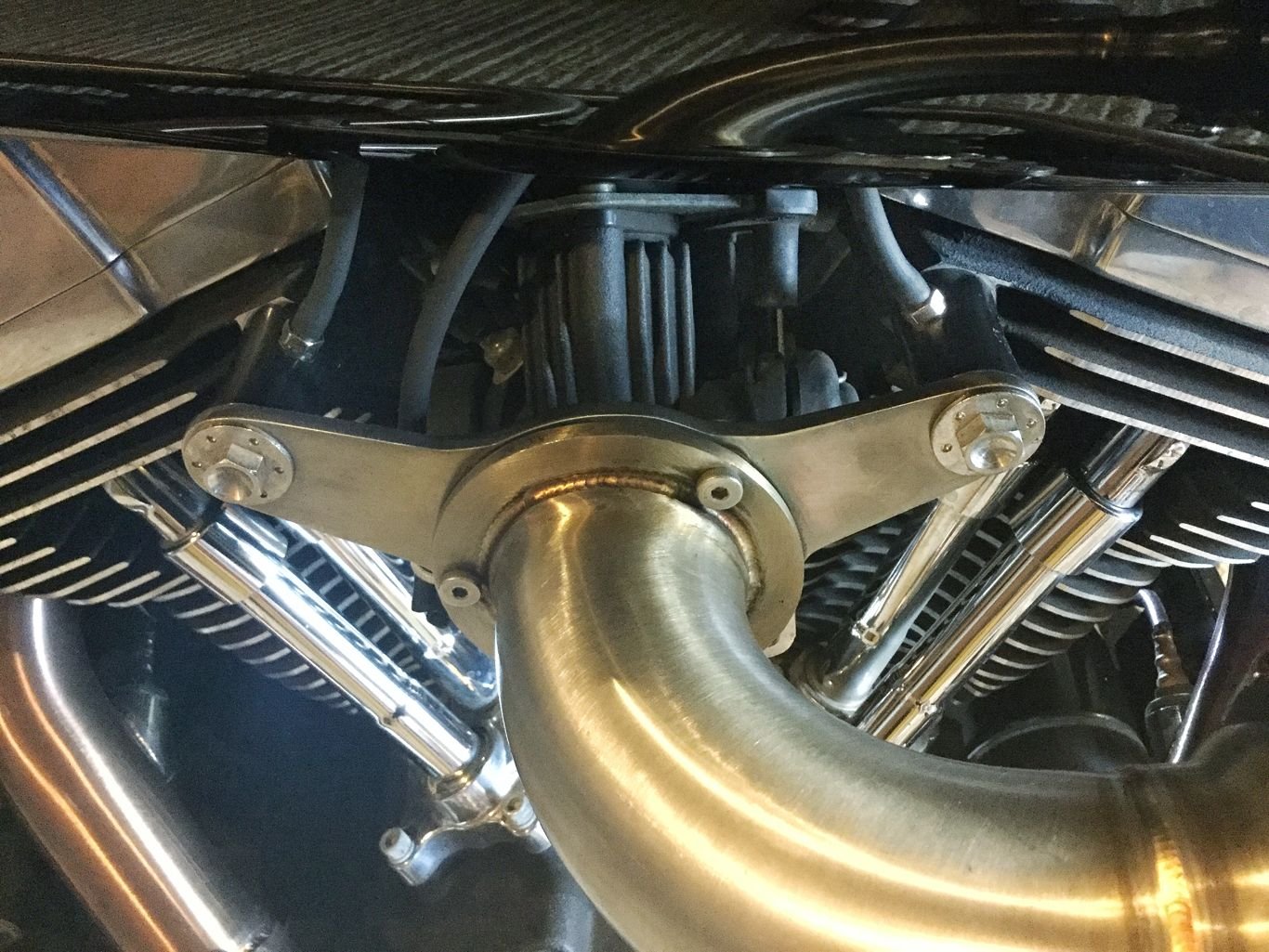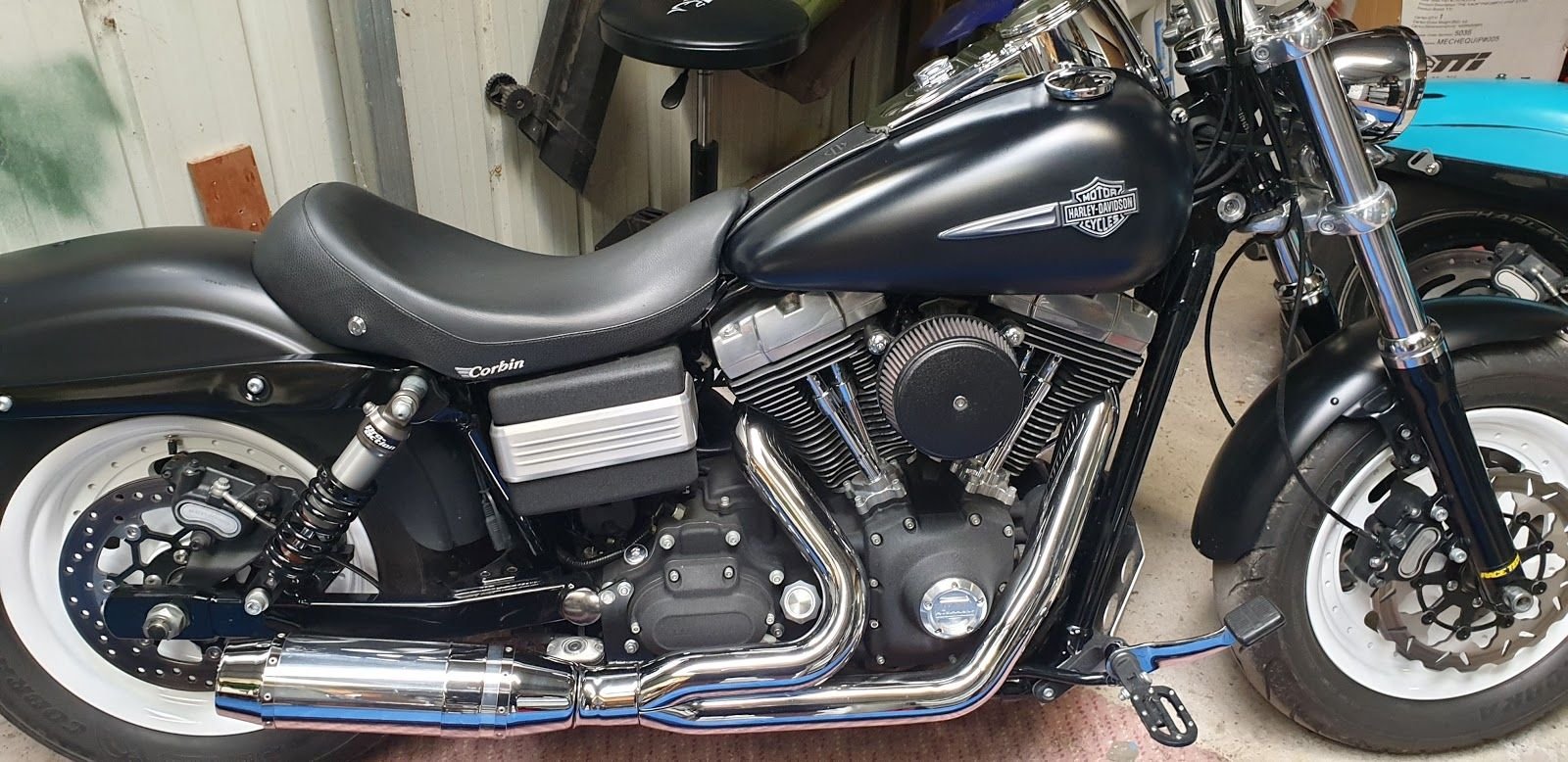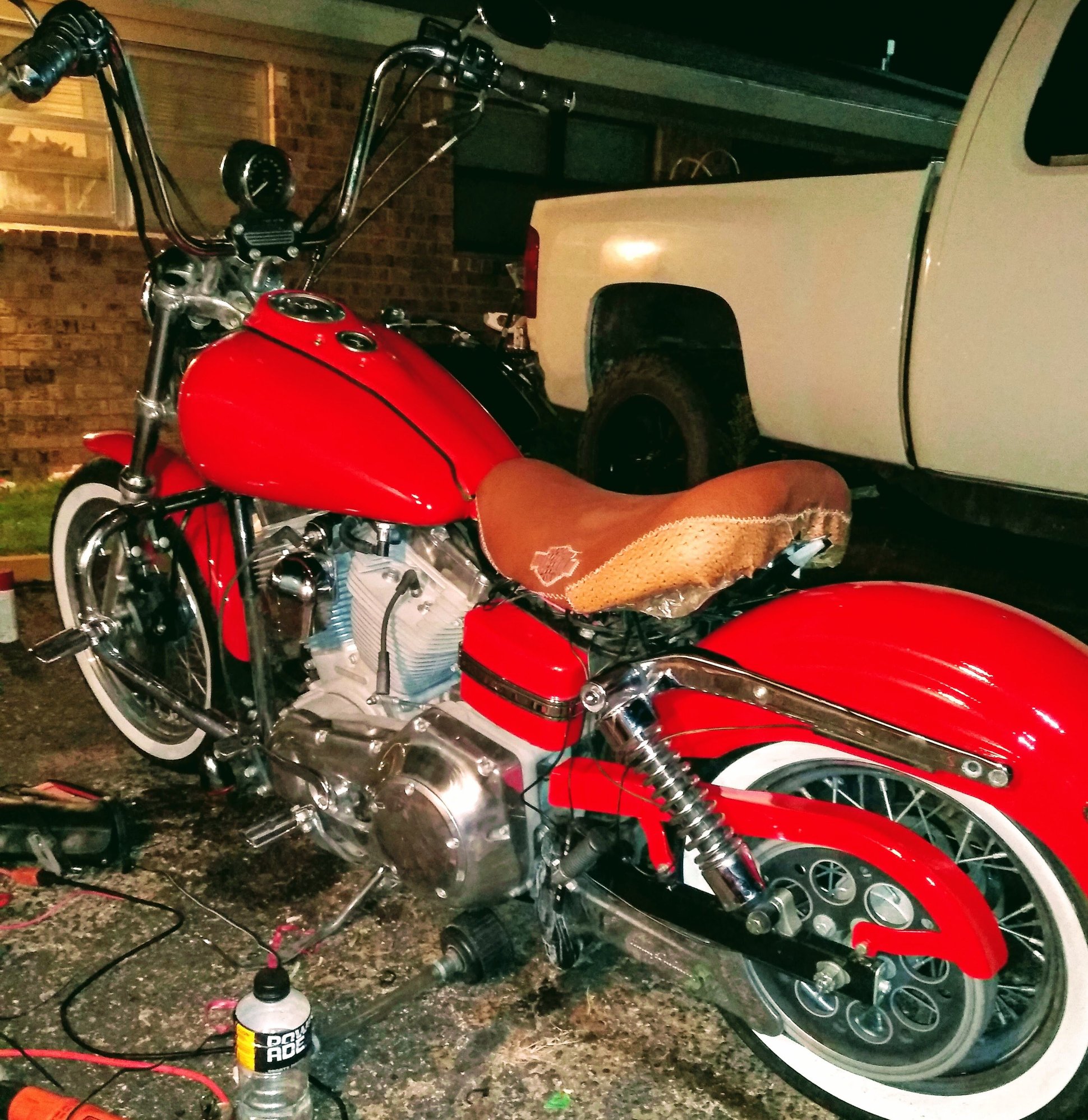What did you do to your Dyna today?
The following users liked this post:
fxdup (08-03-2019)
The bolt clamping force is to hold the pulley to the wheel and the shoulders should be driving the wheel.
This whole issue with waisted bolts / over sized pully holes and counterbored wheel hub is an engineering mess.
Jay your setup was a perfect example of this. You installed properly, torqued properly, retained the bolts from loosening and it failed.
You are on the right track finding bolts with shoulders long enough to engage the counterbores in the wheels just as I did when I installed a 200mm rear tire.
Send me your new pulley and I will sleeve the holes down to .439" and with a bolt shoulder of .437" it will not ever fail with reasonable power levels.
Last edited by Blue Bob; 08-03-2019 at 02:51 AM.
I just don,t think John get,s it.
The bolt clamping force is to hold the pulley to the wheel and the shoulders should be driving the wheel.
This whole issue with waisted bolts / over sized pully holes and counterbored wheel hub is an engineering mess.
Jay your setup was a perfect example of this. You installed properly, torqued properly, retained the bolts from loosening and it failed.
You are on the right track finding bolts with shoulders long enough to engage the counterbores in the wheels just as I did when I installed a 200mm rear tire.
Send me your new pulley and I will sleeve the holes down to .439" and with a bolt shoulder of .437" it will not ever fail with reasonable power levels.
The bolt clamping force is to hold the pulley to the wheel and the shoulders should be driving the wheel.
This whole issue with waisted bolts / over sized pully holes and counterbored wheel hub is an engineering mess.
Jay your setup was a perfect example of this. You installed properly, torqued properly, retained the bolts from loosening and it failed.
You are on the right track finding bolts with shoulders long enough to engage the counterbores in the wheels just as I did when I installed a 200mm rear tire.
Send me your new pulley and I will sleeve the holes down to .439" and with a bolt shoulder of .437" it will not ever fail with reasonable power levels.
No, I do get it.
The bolt clamping force is to hold the pulley to the wheel and the shoulders should be driving the wheel.
If the shoulders are driving the wheel then the clamping force, at least as far as shear goes, is irrelevant. That's one way to engineer it. Unfortunately, that is not how this setup was engineered. If it were, the bolts would never have been waisted and the threaded portion would have ended inside the hub. As implemented, almost none of the driving force is carried by the bolts. You know this and this is why/how you modified yours. A good approach, but not how it was intended initially. With proper clamping force the majority of the shearing force is transferred to the hub and pulley material, not the bolts.
Send me your new pulley and I will sleeve the holes down to .439" and with a bolt shoulder of .437" it will not ever fail with reasonable power levels.
No, I do get it.
If the shoulders are driving the wheel then the clamping force, at least as far as shear goes, is irrelevant. That's one way to engineer it. Unfortunately, that is not how this setup was engineered. If it were, the bolts would never have been waisted and the threaded portion would have ended inside the hub. As implemented, almost none of the driving force is carried by the bolts. You know this and this is why/how you modified yours. A good approach, but not how it was intended initially. With proper clamping force the majority of the shearing force is transferred to the hub and pulley material, not the bolts.
[color=Blue][b]
Even better would be to use hardened steel sleeves that extended into the hub counterbores.
If the shoulders are driving the wheel then the clamping force, at least as far as shear goes, is irrelevant. That's one way to engineer it. Unfortunately, that is not how this setup was engineered. If it were, the bolts would never have been waisted and the threaded portion would have ended inside the hub. As implemented, almost none of the driving force is carried by the bolts. You know this and this is why/how you modified yours. A good approach, but not how it was intended initially. With proper clamping force the majority of the shearing force is transferred to the hub and pulley material, not the bolts.
[color=Blue][b]
Even better would be to use hardened steel sleeves that extended into the hub counterbores.
Sorry John it sounds like you read what I say and repeat in your own words including the hollow dowel pins.
I have looked at my previous post and that is what your doing.
You are now exhibiting the behavior of a know it all.
I on the other hand have done the mods and can prove the outcome of my engineering suggestions....can you?
Last edited by Blue Bob; 08-04-2019 at 02:07 AM.

Vent tubes from TBR intake manifold

Oil Catch Can fitted to Horn Bracket

6 1/2 inch Headlight (not LED)
Added the following to my Fatbob over the last week or two;
Oil catch can - Relocated my the horn between the frame rails, and fitted Oil Catch Can to existing horn bracket. Very surprised how much crap is collected instead of being feed back into the intake.
Swapped out Fatbob twin headlight unit for a 6 1/2 inch chrome light (from Ebay).





